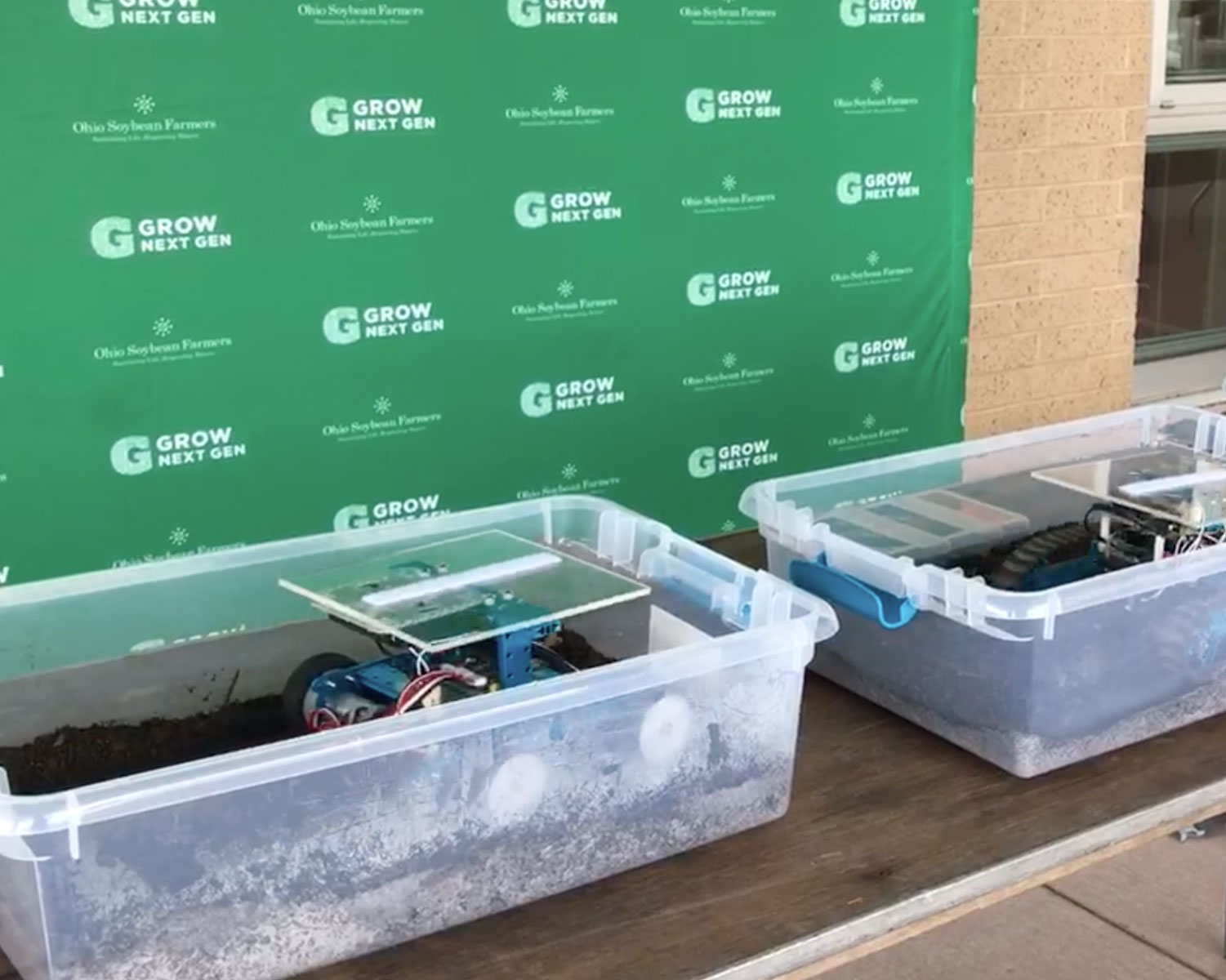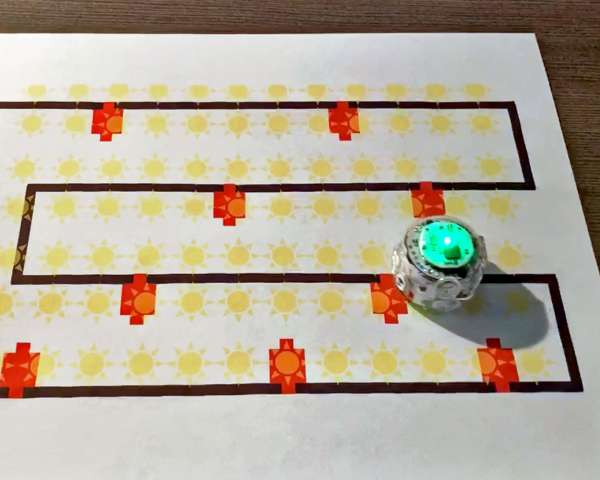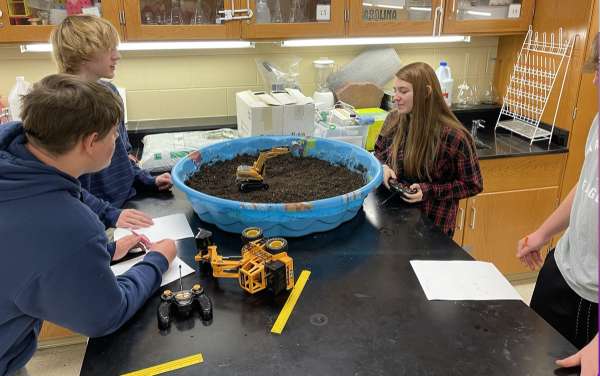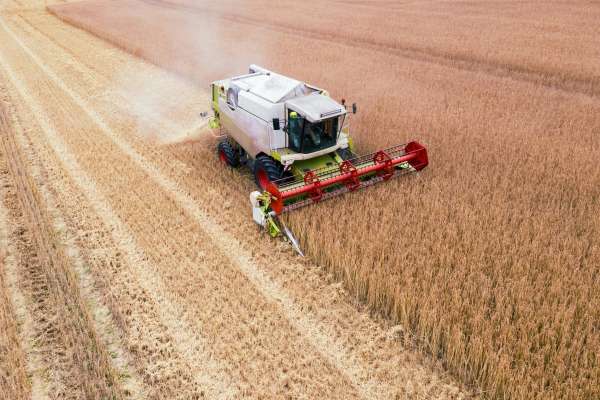Engineering solutions in agriculture
Lessons
# Coding with MakeBlock robots
Students determine a program that will allow robots to create soil compaction in bins of soil.
Files
# Soil compaction experiment
Students run programmed robots to determine the level of soil compaction. An extension is included that shows how a soil sample can be collected from an area and analyzed for density, a way to quantify compaction.
Files
Teacher background
There are many engineering and technological advances that have been made in Agriculture over the past 20 years. These advances have helped to integrate new technology into the modern farm operation, aiding in sustainability, return on investment and efficiency. The types of technologies and engineering are varied, and have given farmers many options when purchasing new equipment, making updates to their present equipment and thereby lowering input costs.
GPS and GIS systems have helped to guide tractors and harvesters through the field during planting and harvesting to make optimum use of the field space, reduce repetitive maneuvers and avoid overlap in end rows when planting.
Telematics have been used to allow for communication between farm equipment and maintenance technicians to warn of potential mechanical failures and use machinery hours to schedule routine upkeep.
Data collection is taking place in many places on the modern farm from tractors to drainage tile. Sensors have allowed monitoring of conditions on fields through the use of Smart technologies on mobile devices.
Unmanned Aerial Vehicles (aka drones) have been used with cameras and filters to detect Near Infrared waves to help assess plant health, reducing the need for physical scouting an entire field. Cameras use different parts of the electromagnetic spectrum to allow farmers a more efficient way to scout the field and identify specific regions that may need attention.
Different tread designs and wheel configurations have been used to reduce soil compaction from tractors as they make trips across the field to spray herbicide, fertilize and plant the field in the spring, and to spray additional herbicide or pesticide as needed throughout the growing season.
What other engineering solutions are in store for the next generation of ag engineers? How will new technologies help the ag industry feed the world?
Next gen science standards
Science and engineering practices
- Asking questions (for science) and defining problems (for engineering)
- Developing and using models
- Analyzing and interpreting data
- Using mathematics and computational thinking
- Constructing explanations (for science) and designing solutions (for engineering)
- Engaging in argument from evidence
- Obtaining, evaluating, and communicating information
Crosscutting concepts
- Patterns
- Cause and effect
- Scale, proportion, and quantity
- Systems and system models
- Energy and matter
- Stability and change
Disciplinary core ideas/content
- ESS2A Earth materials and systems
- ESS2E Biogeology
- ESS3C Human impacts on Earth systems
- LS1A Structure and Function
- LS1D Information processing
- LS2A Interdependent relationships in ecosystems
- LS2B Cycles of matter and energy transfer in ecosystems
- LS2C Ecosystem dynamics, functioning and resilience
- ETS2A Interdependence of science, engineering and technology
- ETS2B Influence of engineering, technology and science on society and the natural world







Share this